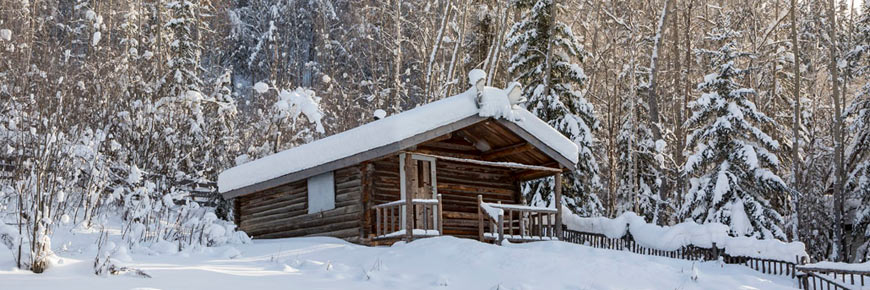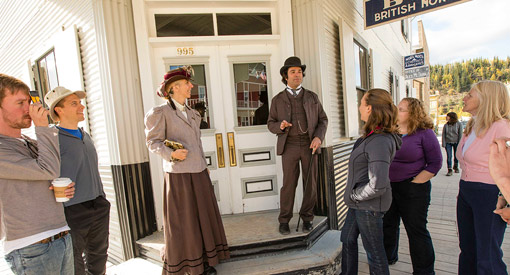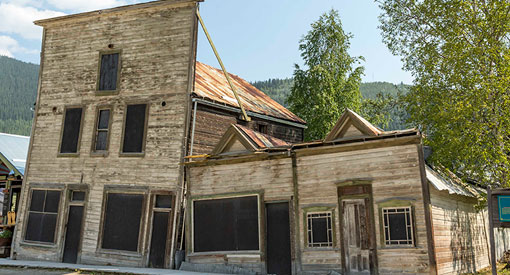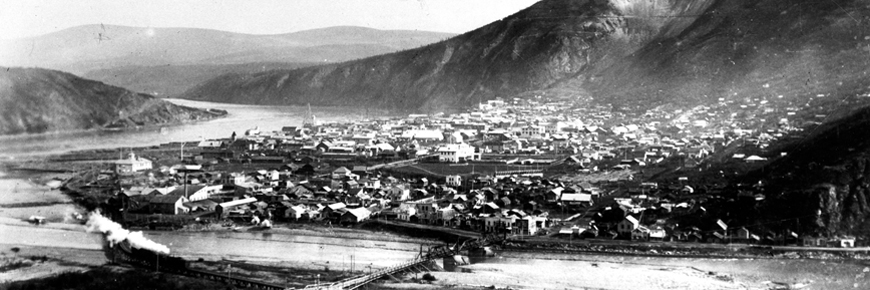
© Library and Archives Canada, C8130 001
Dawson Historical Complex National Historic Site
Klondike National Historic Sites
Reasons for national historic significance
Dawson Historical Complex protects over 17 buildings that are associated with the story of the Klondike Gold Rush. The site reflects the social, economic and political features that shaped the Yukon region over the last century.
Background
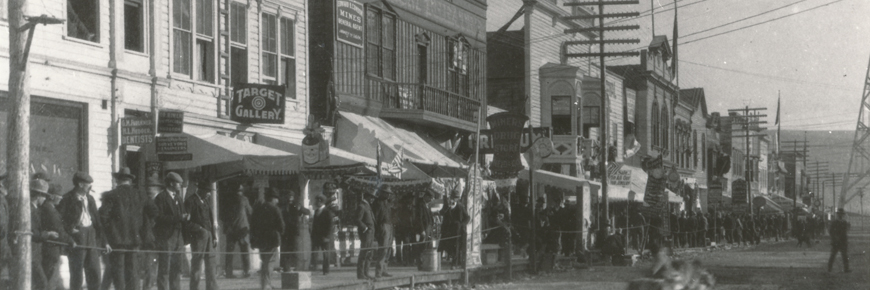
In August 1896, gold was discovered on Rabbit Creek, later named Bonanza. When word reached the outside world, the Klondike Stampede began. Over 100,000 people started out for the Klondike goldfields and some 30,000 actually reached Dawson City in the summer of 1898.
A modern community quickly emerged at the junction of the Yukon and Klondike Rivers. Dawson City became the supply and service centre for the miners and was capable of providing the newcomers with all that they needed from champagne to oranges.
It became obvious during the Gold Rush that there was an immediate need for the enforcement of Canadian law and the firm administration of Canadian policies. To address this the Canadian government established the Yukon Territory and a large civil service was soon in place. Dawson became the centre that provided the administrative and legal role for the running of a mining community and a territory.
The excitement however quickly petered out after the turn of the century, with the formation of large corporations which bought up individual claims. The Klondike continued to produce gold in abundance for a number of years but by the 1940's Dawson was a village with a permanent population of under 1,000.
Dawson City, Yukon
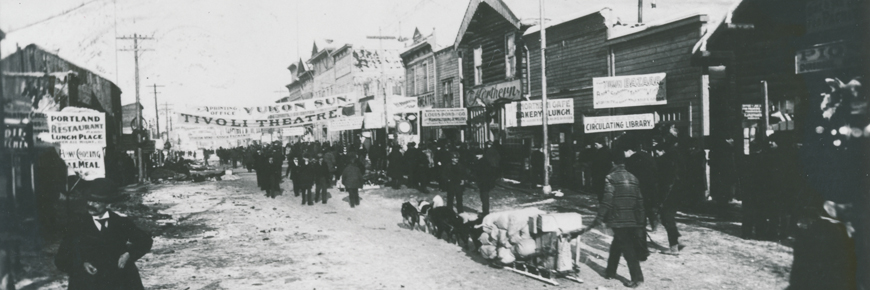
Dawson City, the heart of the Klondike, was named for Dr. George Mercer Dawson, a Canadian government geologist. A trading post on a mud flat at the confluence of the Klondike and Yukon Rivers, Dawson mushroomed in a single season to become a sprawling boom town, made up of log and frame buildings, and tents. In 1898-9, at the height of the rush, the itinerant population of Dawson was estimated between 20,000 and 30,000, making it the largest community west of Winnipeg and north of Seattle.
The decline of Dawson City was almost as rapid as its rise. With the development of industrial mining, the days of the individual miner were over and the population declined. Those who stayed remained optimistic. Dawson's survival as a community was the result of years of mining activity by the Yukon Consolidated Gold Corporation and its fleet of dredges. Nonetheless, the town and the economy continued to erode slowly over the decades.
In 1953 the territorial capital was transferred to Whitehorse. But the picturesque town nestled beneath the scarred and rounded hill known as the Moosehide Slide, located less than 200 miles (322 km) below the Arctic Circle, is still very much a part of our historical heritage.
Milestones
1896
Gold was discovered on Bonanza Creek. Joe Ladue staked out a town site at the confluence of the Yukon and Klondike River.
1897
Word reached the outside about the gold strike. The settlement of Dawson consisted of a tent town surrounding Joe Ladue's saloon and sawmill.
1898
In all 100,000 people set out for the Klondike, but only 30,000 actually reached Dawson. The Yukon became a territory and Dawson became its capital.
1898
Over 300 businesses opened their doors from saloons and dance halls to hardware and grocery stores to dress shops and blacksmiths.
1899
The population of Dawson began to dwindle with the rush to the gold fields of Nome, Alaska and the development of large dredge companies and corporate mining.
1900
Dawson took on the look of a permanent Edwardian community. It was a city of churches, theatres, newspapers, sophisticated municipal services and a vast number of shops and stores.
1902
Dawson City was incorporated as a city and the Canadian government erected a number of public buildings.
1918
Dawson's population had declined to less than 1 000 people.
1959-1967
Seventeen buildings in Dawson City were designated nationally significant.
Buildings of Dawson Historical Complex
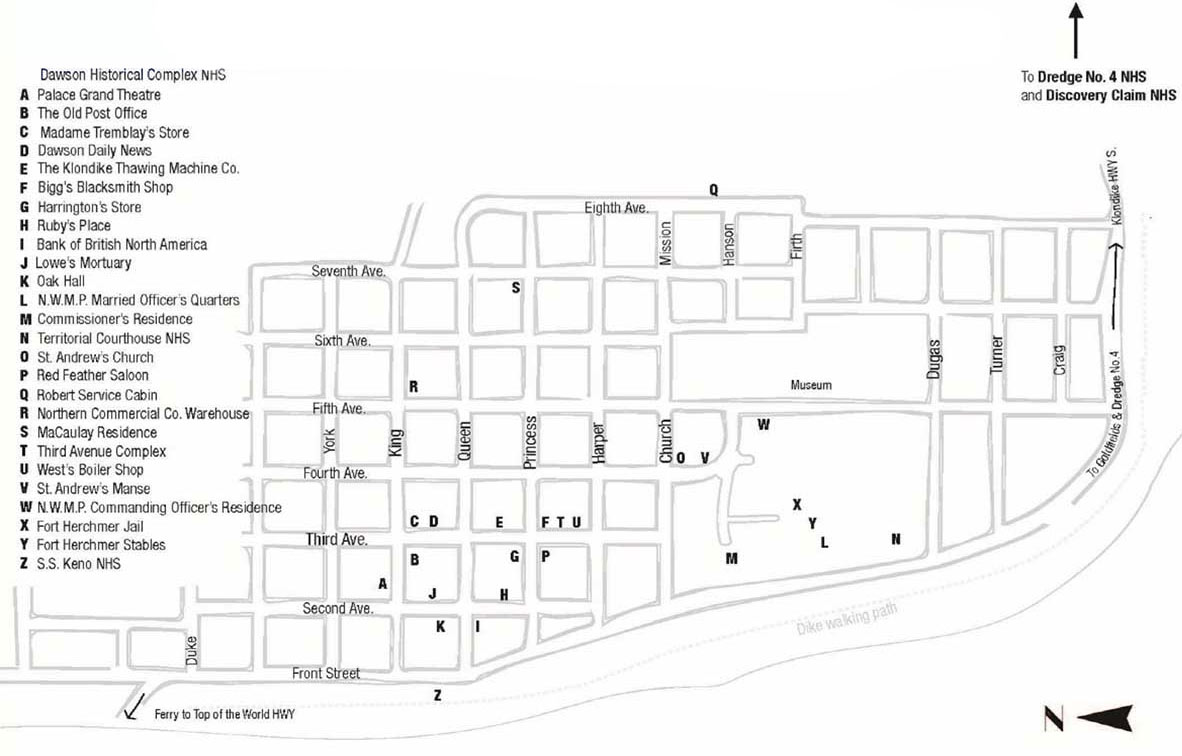
Palace Grand Theatre
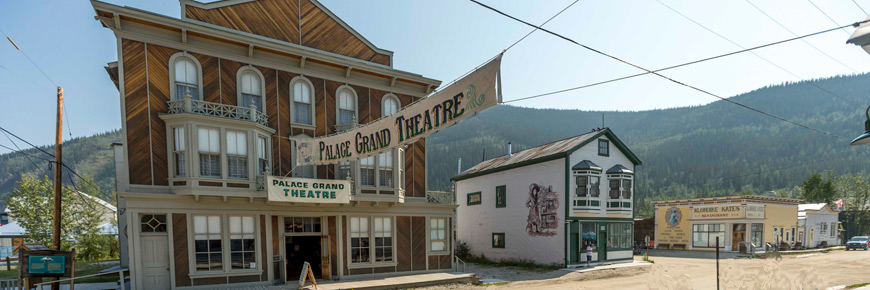
Palace Grand Theatre, 255 King Street, Dawson City, Yukon
Visit the Palace Grand TheatreThe Old Post Office*
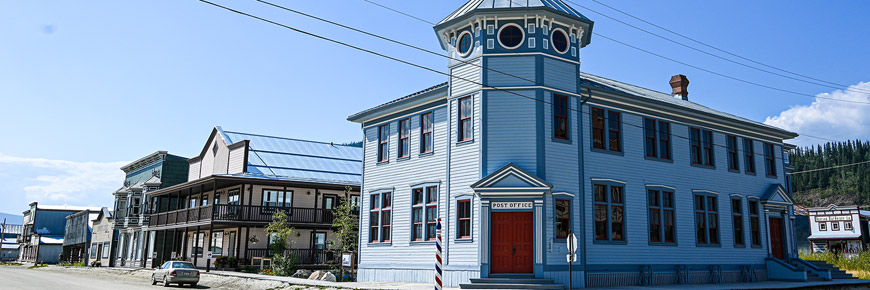
1091 3rd Avenue, Dawson City, Yukon Madame Tremblay’s Store*
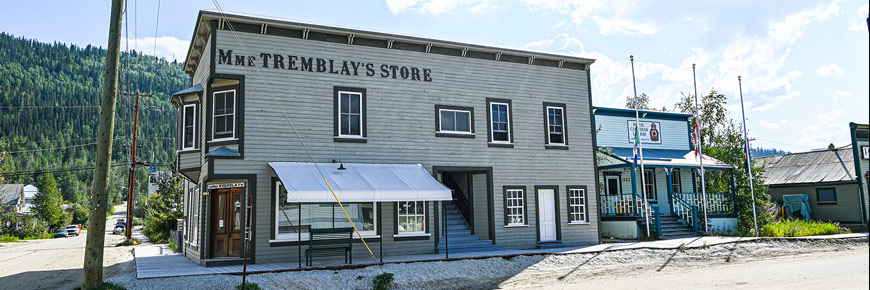
1094 3rd Avenue, Dawson City, Yukon Dawson Daily News
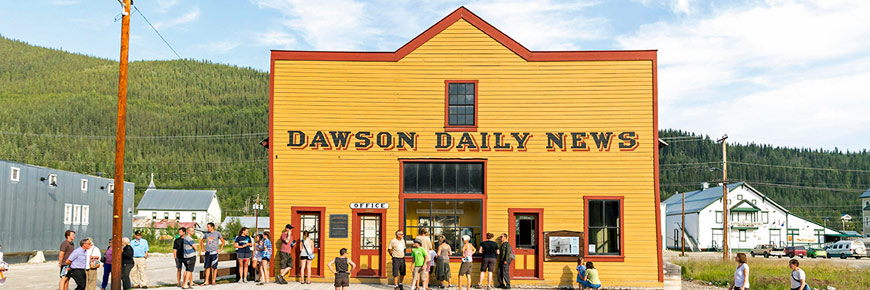
1042 - 3rd Avenue, Dawson City, Yukon The Klondike Thawing Machine Co.*
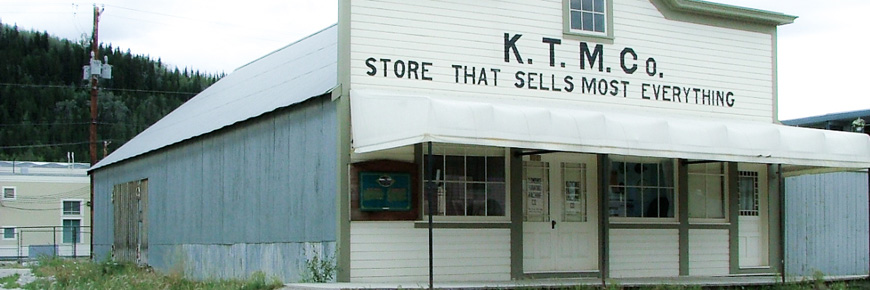
966 3rd Avenue, Dawson City, Yukon Bigg’s Blacksmith Shop
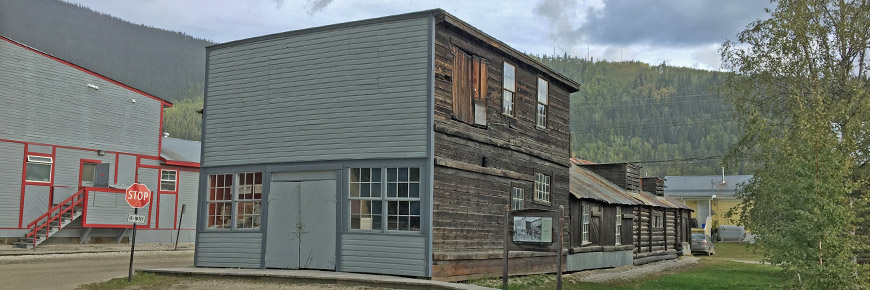
894 3rd Avenue, Dawson City, Yukon Harrington’s Store
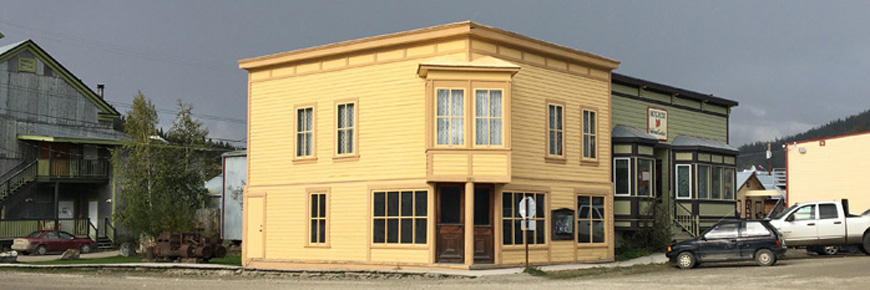
901 3rd Avenue, Dawson City, Yukon Ruby’s Place*
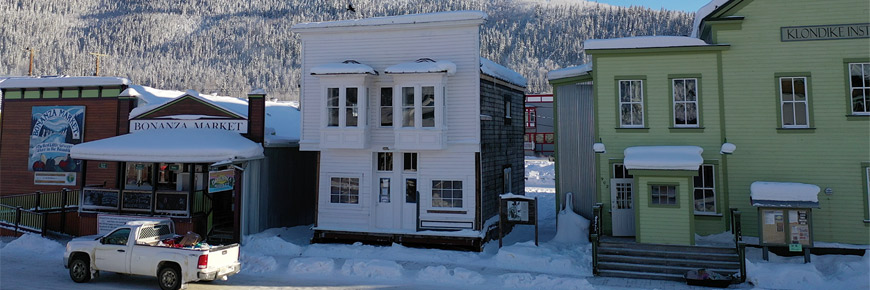
914 2nd Avenue, Dawson City, Yukon Bank of British North America
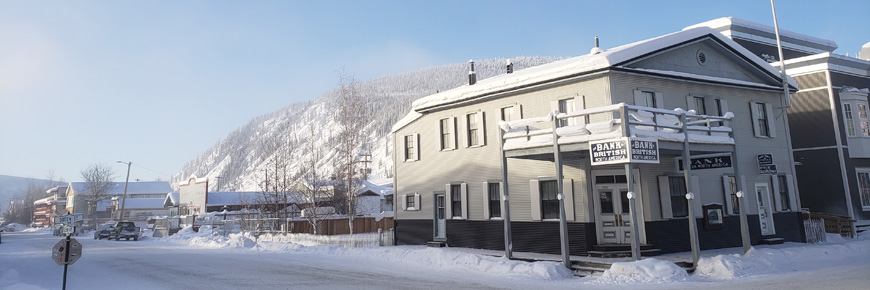
995 2nd Avenue, Dawson City, Yukon Lowe’s Mortuary
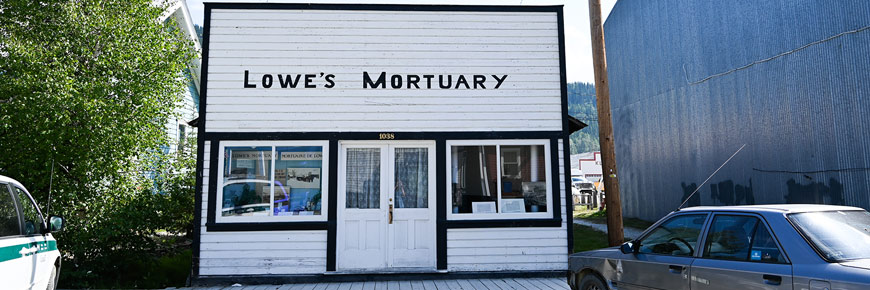
1038 2nd Avenue, Dawson City, Yukon Oak Hall*
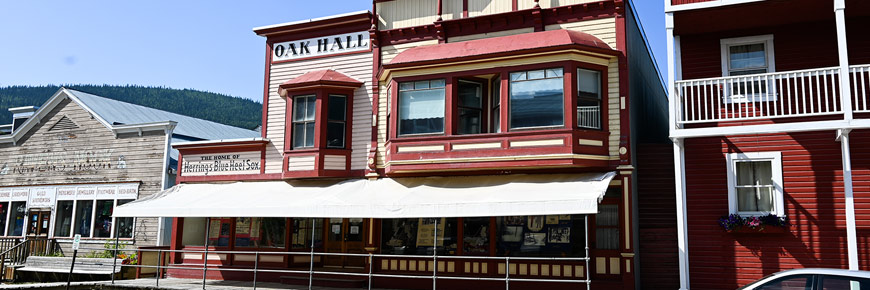
1017 2nd Avenue, Dawson City, Yukon N.W.M.P. Married Officer’s Quarters*
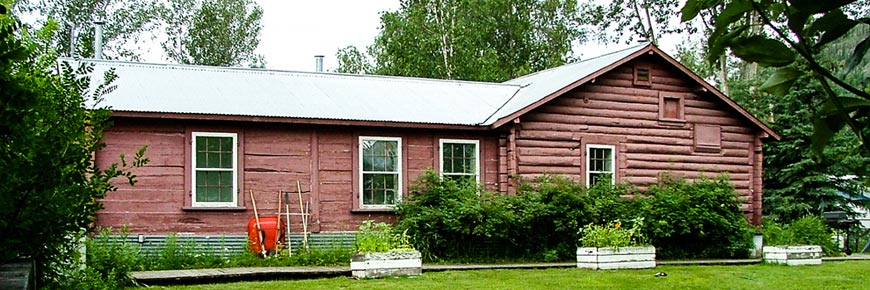
501 4th Avenue, Dawson City, Yukon Commissioner’s residence
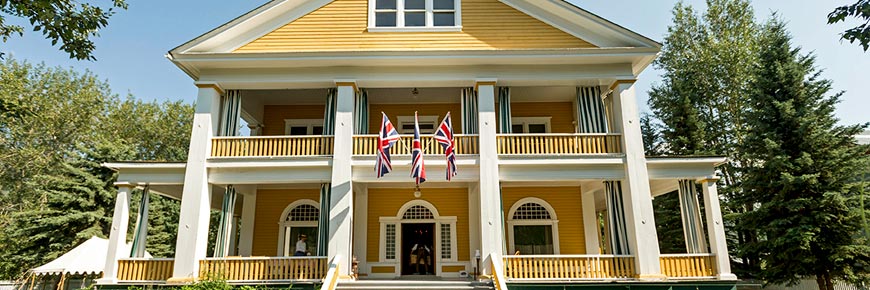
602 Front Street, Dawson City, Yukon Territorial Courthouse National Historic Site
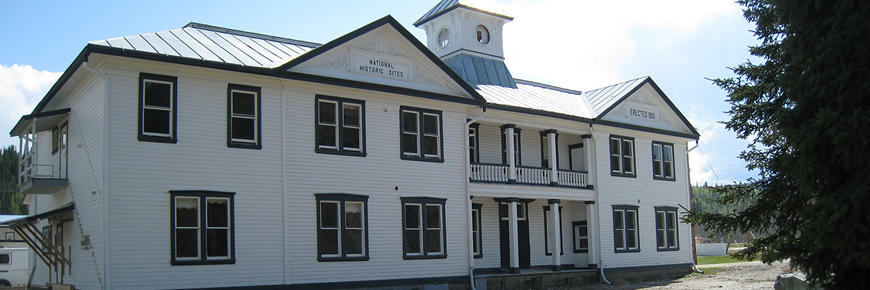
Front Street, Dawson City, Yukon
Learn more about Territorial Courthouse National Historic SiteSt. Andrew’s Church
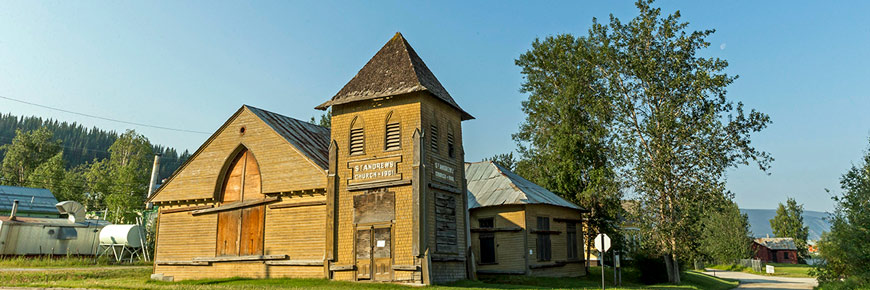
402 Church Street, Dawson City, Yukon Red Feather Saloon
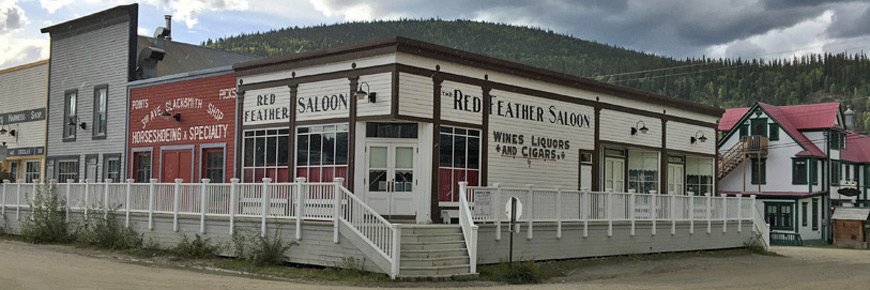
895 3rd Avenue, Dawson City, Yukon Northern Commercial Co. Warehouse
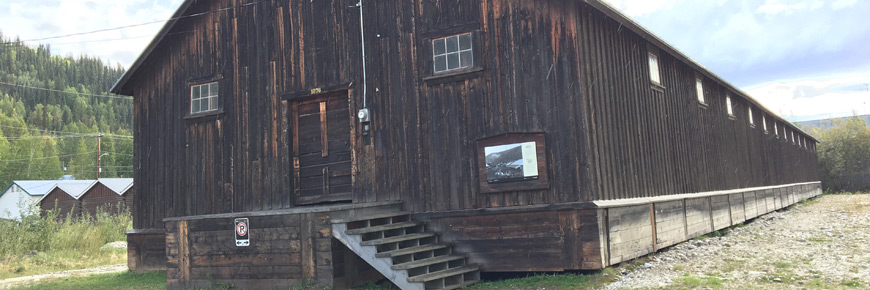
1076 5th Avenue, Dawson City, Yukon Macaulay Residence
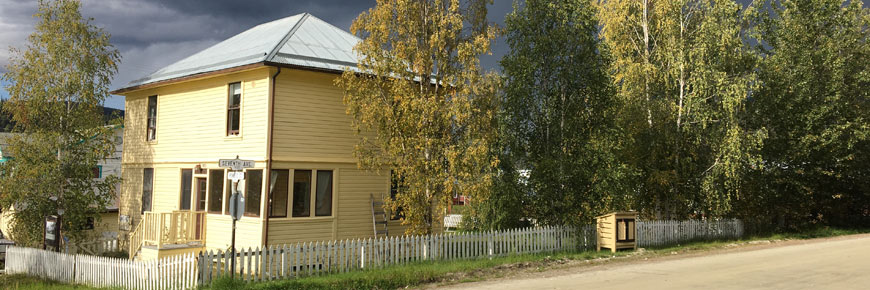
651 Princess Street, Dawson City, Yukon Third Avenue Complex
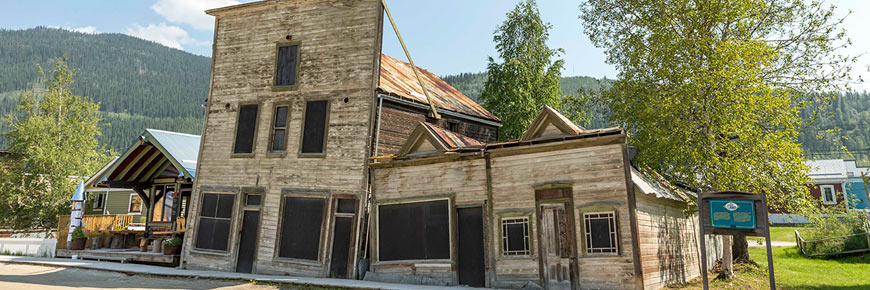
858 - 3rd Avenue, Dawson City, Yukon West’s Boiler Shop
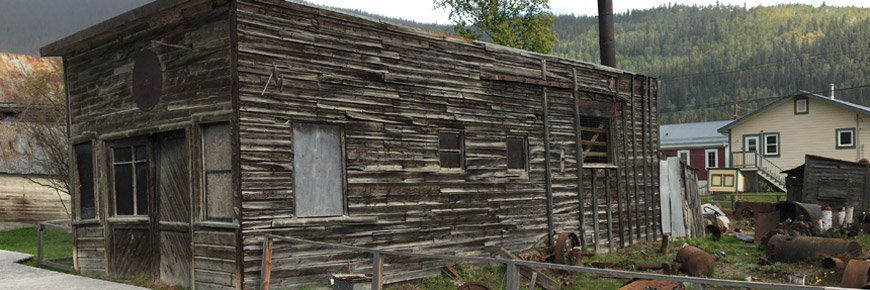
852 3rd Avenue, Dawson City, Yukon St. Andrew’s Manse
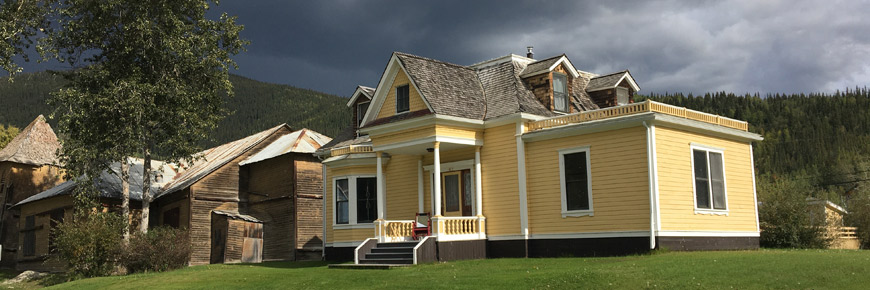
602 4th Avenue, Dawson City, Yukon N.W.M.P. Commanding Officer’s Residence*

Dawson City, Yukon Fort Herchmer Jail

Fort Herchemer, 502 - 4th Avenue, Dawson City, Yukon Fort Herchmer Stables
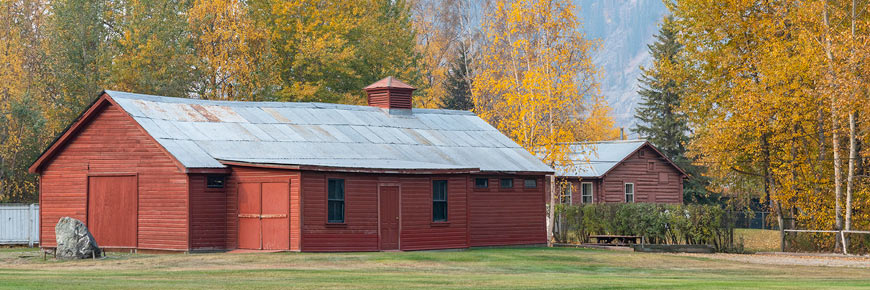
Fort Herchemer, 502 - 4th Avenue, Dawson City, Yukon S.S. Keno National Historic Site
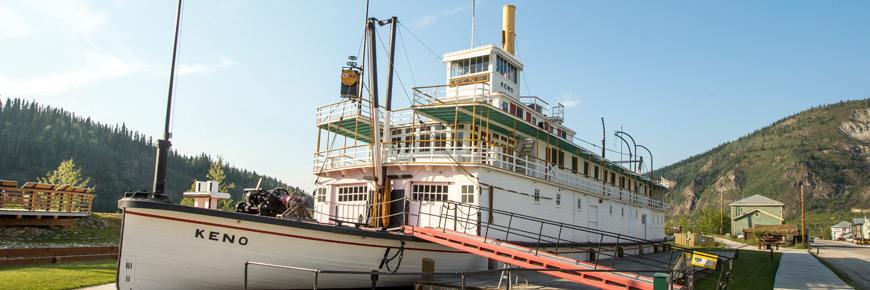
Front Street, Dawson City, Yukon
Learn more about S.S. Keno National Historic Site
Visit S.S. Keno National Historic Site
- Date modified :
